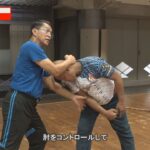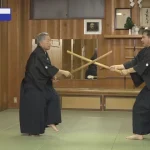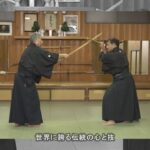by Scott Meredith
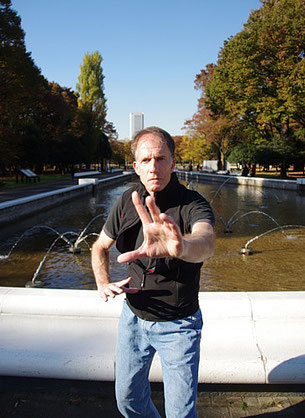
Introduction
The internal martial arts of China are designed to cultivate the qi energy, so that the inner power becomes invincible. The internal branch of Chinese martial arts has many subdivisions, but there are three famous styles: Taijiquan, Baguazhang, and Xingyiquan. The Taijiquan and Baguazhang families are easily understood, at a single glance, as internal practices. Their circular, fluid, and gently paced techniques obviously do not rely on superficial athletic attributes like strong muscles and speedy reflexes. But Xingyiquan appears to be a misfit in the group. It contains only a very few techniques, which appear simple, straight, fast, and strong. The aggressive appearance of Xingyiquan has led to severe misunderstanding of the true purpose and result of Xingyiquan.
Xingyiquan Tactics and Origins
Xingyiquan is usually demonstrated statically, against a passive opponent standing at a close distance. Under those conditions, a Xingyiquan strike from a strong man to the groin, gut, solar plexus, or face of an unresisting person will be physically devastating. That’s why Xingyiquan appears to be a frightening combative art. But under those unrealistic conditions, any hard strike from a strong man, such as a Western boxer, or even from an entirely untrained man, would be equally destructive to an unresisting, passive victim. In this kind of demonstration, the special internal power of Xingyiquan is irrelevant.
Under more realistic conditions of street self-defense, and also sport fighting, where a strong, experienced adversary is free to move aggressively, the limitations of Xingyiquan technique, when viewed from a purely mechanical viewpoint, become obvious.
Xingyiquan is useful for developing the true internal power. The way to get started on that is described in this article. In fact Xingyiquan can be an effective martial art, but only when the true fundamentals of the internal power attribute are understood and consciously cultivated.
My Background in Xingyiquan
In my mid-teens more than 40 years ago I spent a long stretch of time in Taiwan. Xingyi training was not the intended purpose but via a long and circuitous route I got hooked up with a very obscure master of this art, at that time already in his late 70’s.
Unusually for a mainlander, he lived in an extremely remote mountain area of north-central Taiwan, accessible (at that time) only via multiple legs of tortuous bus rides almost 3 hours one way from Taibei. He was small man who only taught Tai Chi to other students, as far as I could tell. But for some reason he took a shine to the teenage me and taught me the full art of Hebei standard 5 Element / 12 Animal Xingyi. This small man by merely placing his soft fist anywhere on my body would immediately trigger a feeling, not impact but of shocking sickness – combination of intense vertigo and extreme nausea.
This was not a strike. Not a 1-inch punch, not even a 0-inch punch because it was not a punch at all. It was only the form of a fist placed anywhere on me. The Master would laugh and try to explain to me that this form-only thing was the key to real Xingyi. Over the months I trained with him, he taught me standard Five Element and Twelve Animal styles, plus a few linking forms, a 2-man set, and auxiliary meditations and a few other types of drills. But his main focus was a certain subset of the Five Fists and a certain subset of the Twelve Animals.
When I left Taiwan, in my last lesson with him about forty years ago now, he presented me with a training manual that covered the internal, energetic aspects of his exotic approach to the art, including his interpretation of ming jing and an jing. He hand-wrote the manual in high literary archaic Chinese, which I couldn’t read at the time. For over forty years I’ve carried along this one-of-a-kind Xingyi training manual.
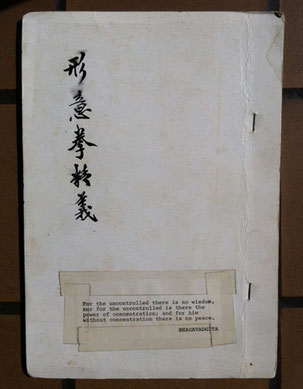
Figure1 One-of-a-kind energy-centric hand-written Xingqyi training manual, 40+years old.
It was only later I began to appreciate what he taught me much more deeply due to several factors
- When I saw other people doing Xingyi, I realized they were falling into a “trap” he had constantly emphasized to me. That of using physical power in the moves, especially tensed shoulder power. I began to understand his point, though comparison.
- My Chinese reading got better and better so I could tease out more of the fine points of this manuscript. This manual isn’t your normal Xingyi writing about “your left foot goes here, your right hand goes there” or “wood overcomes metal”. This is energy-centric all the way.
- More and more I felt the ENERGY STATES and EFFECTS that he told me I would in my own body.
From about this point forward in this article, all the training points are taken from this handwritten manual.
Ming jing (明勁)
Xingyiquan should not be viewed as an inventory of effective fighting techniques. Although the physical moves of Xingyiquan could cause damage to a static, undefended target, they have no special physical or mechanical advantage over other striking systems such as Western boxing or Japanese Karate. Rather, Xingyiquan should be understood as a system for cultivation of a special kind of attribute. Attributes in athletics are qualities that have wide application. For example, fast reflexes are useful to boxers, hockey players, skiers, and many other athletes playing very different games. Skills, on the other hand, are like a baseball pitcher’s throw or a golfer’s swing – they are specific to a particular game.
The skills of Xingyiquan include the 5 basic striking techniques (pi, beng, zuan, pao, heng), the distinctive footwork, and a few supplemental techniques based on animal movements. The attributes of Xingyiquan however, are special kinds of internal martial arts powers. These energies can be refined and applied to any kind of striking system, even systems that have no relation to Xingyiquan’s physical movements. Xingyiquan is best understood, not as a collection of specific fighting techniques, but rather as an attribute development system, because the energy developed from Xingyiquan training can be used independently of Xingyiquan’s combat techniques.
The great Xingyiquan master Guo Yunshen (1829 – 1898) classified the energy developed by Xingyiquan training in three levels:ming jing (obvious energy), an jing (covert energy), and hua jing (transformative energy). In this section I will discuss onlyming jing. Some people assume that because this energy is called ‘obvious’ it must be ordinary physical (kinetic) energy. That is not correct. If ming jing were the ordinary energy of physical motion, there would be no need to call it out as a specially named category in the hierarchy of Taoist attainments upon which Guo’s framework is based. That would simply be the well understood basis of ordinary Shaolin, Karate, Judo, boxing, etc.
In any case, ming jing is a type of internal energy. If you train Xingyiquan correctly, you will begin to reinforce your strikes with this special internal power. Ming jing greatly adds to the destructive effect on the opponent. It becomes an extra “sauce” on your physical strikes that amplifies their power. The cultivation of ming jing is the first attribute developed by Xingyiquan .
How does the ming jing function combatively? We can compare it to two kinds of purely physical striking: first, punching with bare knuckles and second, punching with brass knuckles. Of course hitting with bare knuckles can be powerful and destructive, if you are strong and are able to target a weak area of your opponent. But hitting with brass knuckles greatly amplifies the power and effect of your strikes. Note crucially that the additional power derived from brass knuckles applies to any kind of punch, regardless of technique (e.g. jab, straight, hook, upper, etc.).
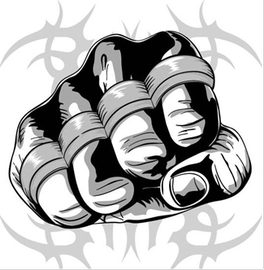
Figure2 Brass knuckles greatly amplify your striking power
Using these, your physical technique won’t matter so much, as long as the punch lands. The problem is that all forms of brass knuckles are illegal in most countries, including the United States. But if you train Xingyiquan correctly, the internal ming jingfrom Xingyiquan will greatly amplify the power of your bare-knuckle strikes in an analogous way. And just as with brass knuckles, the augmentative power of the ming jing will apply to all your strikes – not only the limited technique inventory of Xingyiquan per se.
General Principles
- INTERVAL TRAINING: This means that you need to inter-weave brief but intense periods of technique training, such as a line or two up and down the room doing BENG GUAN all the way, with interval of Quiet Standing. The ratio of “lines” or “circuits” of technique repetition vs. Quiet Standing should be 1:1. This is really essential. Without the frequent standing intervals you’ll never feel anything. Your hands may be held in Tai Chi style, or can be turned inward a little, as show in the figure. The famous Xingyi master Sun Lutang first began to feel the deeper energies when he alternated in his training between performing a few repetitions of one technique with immediate periods of quiet standing [insert SLT original Chinese quote here].

Figure 3 Tai Chi style of Quiet Standing is shown on the left side, and Xingyi style of Quiet Standing is shown on the right side. - LIGHT ARMS: That means absolute shoulder relaxation: that’s really the main teaching of the manuscript and this whole presentation: there must be no shoulder tension at all. This is just energy practice. I was doing it very tensely when I first learned it and the master knocked it out of me. There is no need for ANY shoulder tension at all in this practice!
- RELAXED, WELL_SHAPED FIST: Many martial artists believe that you either need to have your fist tensed throughout the move, or else they hold the more sophisticated view of “only apply power at the very end, on impact”. That’s perfect for Western boxing and karate but completely wrong for solo Xingyi practice. If you train that way why bother with Xingyi at all? Xingyi is supposed to be something different, special. If you train that hard style way, why bother with Xingyiquan in the first place? Everybody already hits with maximum physical tension and power, its just human nature. Even in real fight situations, where you do need to firm up your fist to avoid hand injury on impact, the years or decades of “empty” training you’ve done will mean that your hands and arms are still far more imbued with this weird protective internal force than they would have been had you only practiced with tension. Anyway, for the purpose of training the material in this film, for internal energy, any tension whatsoever in the movement is going to completely shut down the internal.
- PELVIC FLOOR POINT: For Xingyi, basically you only need to be aware of one point: the HUIYIN (perineum point or root chakra). This perineal area is called the pelvic floor or muladhara in yoga. With awareness or a feeling of this point very slightly lifting, you generate a feeling of energetic compression in your torso. But it’s essential to keep Xingyi as an energetic practice. From an athletic standpoint we often are told to strengthen the “core muscles” of the torso. Or, from a yogic standpoint, we are taught to think about slightly tensing the pelvic floor area in mulabanda. But neither of those concepts is relevant to Xingyi training. We are working strictly on an internal energy model now, nothing to do with tensing any muscles or contacting or compressing any physical thing whatsoever. It is an awareness or light concentration. Proper performance of the energy-centric work here will blast open the huiyin point and result is a truly cosmic feeling energy rush through your whole body.
Structural Basics of BENG QUAN
Xingyiquan has five main striking techniques, and another 12 striking methods based on animal movements. It is good to learn the entire art, but one technique stands alone above all others as the essential gateway to the ming jing experience of Xingyiquan.
The most energetically effective Xingyiquan strike is called BENG QUAN (崩拳). You punch straight and level with one arm, while drawing back the opposite arm. You step forward along a straight line while punching. The striking hand is a vertical fist, and the punching arm is aligned with the centerline of the body, forward-facing in a line with the navel and nose. The feet are about shoulder-width throughout the movement. You step forward as you punch by pushing off the rear foot. As the front foot lands, the rear foot catches up and narrows the stance again with a half length follow step (半步).
Most people assume that the beng quan power must derive from some kind of physical positioning or structuring. This is mistaken. All Xingyiquan power, including the power used in beng quan, is derived from the qi jing (氣勁), the internal power. This is not physical in the normal sense of muscles, bones, tendons, fascia, and reflex reactions. It also is not the warm slight tingle that you can easily feel in your hands from ordinary Qi Gong exercises.
Xingyiquan ’s first level of internal power, the ming jing, is felt as an instantaneous electric lightning bolt. Once you have developed it in your body, you can concentrate it into your fist with a quick punch. Even your light strikes will become extra unpleasant to your training partners, and make them say: Hey, that punch really hurt!
The energy harvested from beng quan will also make your hands much more powerful for grappling and submission practice and for knife retention skills. After training correctly in energy-centric beng quan for some time, it will become much more difficult for any ordinary fighter to trap your arms, wrists, elbows, or shoulders in joint locks.
Energetic Effects
The most important element of training is not the physical performance; it is learning to generate the ming jing energy. This is not abstract or philosophical. It is something that you will feel directly in your arms and hands as you punch. The energy originates in the dantian (丹田) and streams quickly through the entire body.
FIST: You should use a vertical, standing fist for beng quan, not the rotated fist of Karate. You will not be able to feel the energy as easily with a horizontally rotated fist. Xingyiquan masters often demonstrate with the fist angled slightly upward. But that is not optimal for beginners. To feel the first jolt of ming jing, it is best to keep the striking arm and fist level, or even angled very slightly downward, as though you are hitting with the first two (big) knuckles. The striking arm should be aligned inward to the center of the body, in line with the nose and navel. The other non-punching arm is retracted to the hip along the same centerline as the striking arm goes forward.
The most important point is that the fist must be completely relaxed. You must maintain a realistic shape of the fist (形) but without any tension at all. Because of the strong and fast appearance of Xingyiquan, students always assume that they must tense the fist, either throughout the entire movement or at least at the every end, bracing for impact. For energy cultivation this is completely wrong. If you practice with a tense fist, you will never feel the ming jing. The fist is kept perfectly shaped for actual striking, and yet completely empty of any tension at all times. However, you also must not let your fist get droopy, collapsed or sloppy, with knuckles mis-aligned. It must appear from the outside to be a strong, solid fist. Yet inside it is empty of physical tension. It is merely the perfect SHAPE of a fist, filled up with your mind only, without any physical bracing.
To understand this, try lightly grasping a marker pen in your upright (vertical) fist. Don’t use any strength to grip it tightly, but softly try to form your hand into a proper fist structure around the pen – as though you could properly strike something but without the tension. Now, remove the marker pen and try to keep that same shape. Viewing your fist from above (the ‘tiger eye’ 虎眼) you will notice a slight gap at the center of the fist, because the space where the marker pen was is now empty. When you first begin practice, try to keep this middle core of your relaxed fist hollowed out, as a reminder not to ever clench it tight. Later, when you have understood the energy, you can close the fist completely and yet still keep it entirely soft.
Of course, these instructions are for beng quan energy development. When you later actually strike a physical object or person, you need some firmness in your fist, to avoid injuring your hand. But after practicing beng quan in a relaxed way for a long period, your strike will be reinforced with the ming jing – even when physically firmed up.
STEPPING: You launch from the rear foot. Master Guo Yunshen described the initial setup feeling:
後足用力蹬勁,如同邁大步過水沟之意
Your rear foot holds strength as though preparing to leap across a stream.
Xingyiquan uses two stepping modes. Shun bu (順步) is when the same-side hand and foot both go forward, e.g. right hand with right foot. Ao bu (凹步) is when the striking arm is crossed with the stepping leg, e.g. for example, a right hand punch with the left foot stepping forward, as shown in Fig. 3. You begin the punch with the forward step. You push off the rear foot, and let the entire sole of the forward foot land at once, not heel first. Throughout the step and punch, you maintain a 70/30 proportion of rear/front weight.
The stepping front foot can cover a long distance, and the rear foot quickly “catches up” just behind the front foot at the end. This is called gen bu (跟步) and it leaves you with most of your weight on the rear foot. A hard stomp with the rear foot is unnecessary and bad for your feet. A crisp, quiet catch-up step is best. At the end, the front foot may be straight or very slightly toed inward, while the back foot is toed outward at about 45 degrees or less.
For beng quan and all of Xingyiquan, it is essential to let the legs do the work. Don’t force the punch with your arms and shoulders. The ancient Xingyiquan masters have taught us: 足打七分手打三 meaning the legs are the main physical power source, while the arms are strictly subordinate to them.
WAIST and DANTIAN (丹田): In Taijiquan and other internal arts, the ming jing can be felt circulating from the dantian down to the feet and then upward through the spine, eventually reaching the hands. Xingyiquan is different. Due to the quickness of Xingyiquan techniques, the ming jing is shot directly from the dantian to the forearm and fist. The highly concentrated short energy produced in this process is felt as a kind of electric jolt through the arm and fist, ending at the knuckles. At first, you must twist the waist, not harshly but decisively. That’s why the aobu stepping method is best at first. The shunbu step, which lacks the deep counter-torque of the waist, will not at first provide a noticeable electric surge. When you understand the practice better, both aobu and shunbu will produce identical energetic effects.
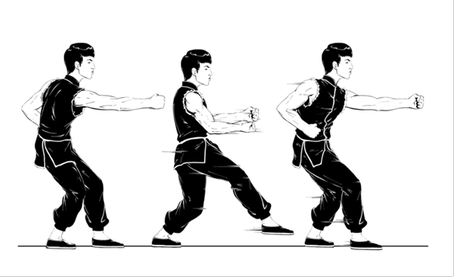
Figure4: 凹步 beng quan (walking from left to right) in ao bu (counter-turned step)
From left to right, Fig. 4 shows the progression of beng quan. The move begins at the end of a previous right hand punch. The illustration shows beng quan in the aobu stepping pattern, so the front foot moves forward, but the weight is kept to the rear as much as possible. It is possible to step so that your heel lands first, but if possible try to step with a level foot (as shown). As you prepare to punch, the punching hand glides over the retracting opposite fist, along the centerline of the body. Finally, the strike is launched and completed with a substantial counter-turn of the waist. Fully extend the punching arm but without locking the elbow.
When you practice as described above, you will eventually feel the ming jing running as a quick jolt through the bones and flesh of your striking arm and fist on every punch.
It is not ordinary electricity, but it feels exactly like a stream of electricity, jolting through your arm from elbow to knuckles. At first you will only feel this when practicing beng quan in the aobu mode. Later, you will begin to feel it in shunbu mode. Over time, you will be able to feel it in all five of the Xingyiquan striking techniques, and finally you can apply to any kind of striking and even kicking, far beyond the original Xingyiquan technique inventory.
After a longer period of practice, you will feel the energy originating at the dantian and instantly jumping to your fist. This is not something you imagine or visualize; this is something you will actually feel directly. At first, you may only feel the surge on one side’s punch, and not on the other side. In this case, the problem is due to excess unconscious tension in the shoulder (on the side opposite to the arm that lacks the energy charge). To fix this, relax both shoulders and fists even more.
The most common problem that prevents people from feeling the ming jing energy bolt is overly tensed shoulders. Tension blocks the energy. Especially people who have trained in Karate or other external styles of Kung Fu (外家拳) find it difficult to drop the tension in their shoulders (and fists, including the retracting fist) when they strike. You must relax your shoulderscompletely when you punch.
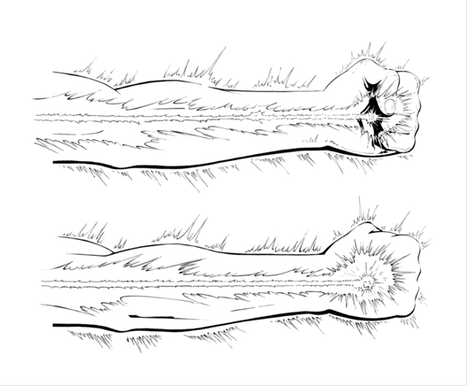
Figure 5: You will feel the ming jing shoot through the punching arm. It feels like liquid lightning.
In your practice, try to perform at least 5 and up to 10 punches in a row as you walk along a continuous straight line. When you reach the end of your line, turn and continue back in the opposite direction. There is a particular protocol for correct physical movements of the turn in Xingyiquan. That protocol is beyond the scope of this article, and for energy development it isn’t essential. For now, just turn yourself around and continue with another line of punches.
When you have completed a full circuit (two lines – go out punching, turn, then return to start) you should always strand quietly upright with your arms relaxed by your sides for a few minutes. Keep a bit of mind consciousness in your hands. If you have practiced correctly, your breath should be completely normal. Remember beng quan uses no strength so there should be no panting, sweat, or fatigue whatsoever. If your breath is disturbed or you feel any fatigue, it means you are practicing with too much upper body tension.
If you have practiced correctly, when you stand quietly you will feel your legs are throbbing and vibrating with tremendous surges of ming jing power, as though they are filled with giant vibrating steel springs. This is not imagination or visualization. It is what you will directly feel in yourself.
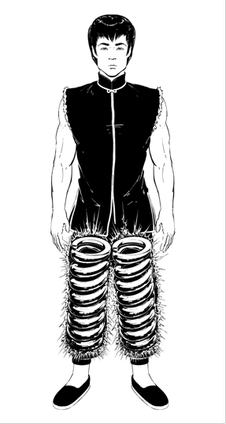
Figure 6: Stand quietly after every two or three lines of practice.
Your legs will feel highly charged with ming jing vibratory energy.
AN JING (暗勁)
When you have absorbed everything in the prior sections, and when you clearly feel a strong jolt/bolt of ming jing energy through your forearm from elbow to fist (or better, from shoulder to fist) with every single punch-step execution in BENG QUAN, then you’re ready for this an jing training.
We begin with BENG QUAN again. BENG QUAN is the key to first experiencing both the ming jing and the an jing in Xingyi. Once you have thoroughly mastered the ming jing energy experience in BENG QUAN it’s not difficult to then integrate the same result into your other techniques.
You practice your BENG QUAN exactly as already described – the ao bu step, long, low, loose, light punch with level and centered punching arm, flat-knuckled, standing fist – all that is the same. But when you are working only the ming jing, your steps are quick and continuous. Not tense at all, but quick and crisp, punches follow one after another, as you work down your line.
To add the an jing, layer, you pause for just a quarter beat, a very brief pause just after you’ve fully extended the punch (and thereby felt your jolt/bolt of ming jing). After that jolt/bolt thing, not simultaneous with it but immediately following it, just turn up your fist slightly. Make no other change to your position. It is not a tensing of the fist.
It is only a slight upturn of the fist, as though you are slightly trying to strike something 1 inch above your hand with the top two (index and middle finger) knuckles. The moment you do this little upturn thing, you will feel a huge surge of the soft, uniform, perfusing POWER swamping from your feet through your entire body, not only to fist but everywhere in your body.
The an jing lags the ming jing by just a half tic in timing. In this an jing stage you will experience the phenomenon described by Guo Yunshen as follows:
暗勁手足停而未停即大周天四正之沐浴也
With an jing, even when your hands and feet stop, the energy hasn’t yet
stopped. It surges through your body and limbs like a power wash of water.
There is a web photo of a master practicing Xingyi in old China. In this photo, he is shown pausing with his BENG QUAN fist shown upturned in basically the way I’m talking about here:
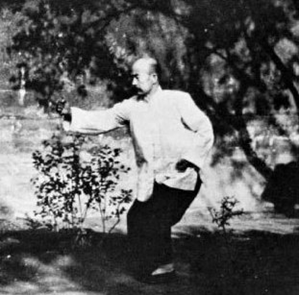
Figure 7 The correct fist position for an jing work in BENG QUAN
What you’ll feel at that moment is the Xingyi version of what I’ve describe as the ‘soft wave’ in the Tai Chi books. It’s an amazing, incredible thing to feel. But just do it for the quarter-beat upturn, keep your position good in every way, and immediately move on to the next regular BENG QUAN step/punch, just keep going. Your next punch should be level as always, as already described for ming jing practice, and again you’ll feel your normal jolt/bolt (but probably even stronger than usual now ? these energies keep cycling around and layering over and over on themselves, like multi layered of molten steel in Japanese sword forging.
When you are done with your one line or one circuit, continue with your regular “interval” of Quiet Standing, as previously described. This is where the real harvest happens and the new energy is absorbed into your system. Do your regular quiet standing for your normal 2 or 3 minute “rest” interval and you’ll feel overwhelming energy bursting from your legs through your hui yin point, across your system, up to head, through arms and hands and everywhere. Then resume practice with the next circuit.
Conclusion
The ancient Xingyiquan masters have written:
崩拳之形似箭 the form of beng quan is like an arrow
打出銳似箭 it is shot out as sharply as an arrow
性屬木 its elemental nature is wood
Therefore imagine your strike issuing lightly, cleanly, quickly, and sharply, just like an arrow. An arrow is very lightweight. This corresponds to the complete lack of tension in your body. You become pure shape, only 形, no ‘filler’ of muscular tension should exist in your body. Do not tense your shoulders, arms, or fists even slightly at any time during the practice. If you do, you’ll never feel the blast of energy I am describing.
In ancient times, arrows were made of wood tipped with iron, both light and strong. When you practice beng quan, imagine that you appear in the shape of a human being, but that your body is actually made of a very light wood, such as balsa wood. Balsa wood looks like ordinary wood, but when you pick it up you’ll always be surprised that it has almost no weight or density. It only has the appearance or form of ordinary, heavy wood. Bamboo has a similar strong-yet-light quality too. Master Guo Yunshen (郭雲深) has said: 起如箭落如風, meaning: Your strike shoots out like an arrow and finishes (weightless) like the wind.
If you keep these ideas in mind, not as abstract philosophy but as specific practice requirements, you will begin to feel the surge of ming jing power in your arms as you strike. It will start as a very small squirt and you’ll think it’s nothing, but the oak grows from the acorn. The great past masters repeatedly emphasized the phrase: 拳经云一通无不通也 which means: The ancient classics teach that when you understand just one [technique of Xingyiquan], you know the entire art.







